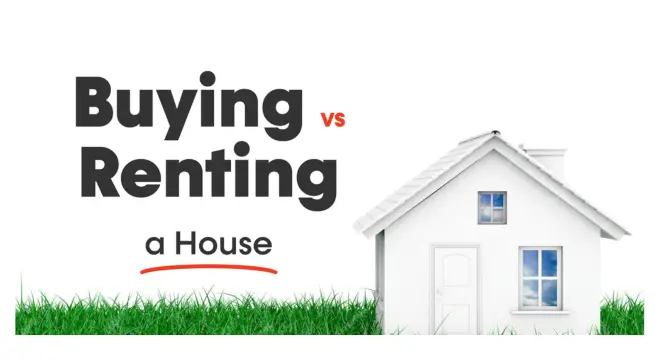Beat the Competition: 7 Tips for Buying in a Hot Seller’s Market
If you’ve been house-hunting lately, you already know how brutal it feels out there. Homes fly off the market in days, sellers get multiple offers, and cash buyers seem to win before you even blink. I’ve seen clients pour their heart into five, six, even ten offers — only to end up empty-handed.
But here’s the truth: you can compete. You just need to stop playing defense and start using smarter, more calculated moves. Let’s start with one of the most misunderstood — but incredibly powerful — tactics.
1. Use Appraisal Gap or Partial Waiver Strategically

Here’s the thing — sellers don’t just want the highest offer. They want the offer most likely to close. That’s why buyers who understand how to use an appraisal gap clause (or partial waiver) have an edge over everyone else.
When a home sells above asking, the lender still sends an appraiser to check if the price makes sense. If it doesn’t, the lender won’t finance the full amount — and suddenly, your “accepted” offer collapses. Most buyers panic and either back out or blindly waive the appraisal altogether, which is risky.
A smarter move? Offer a partial appraisal waiver. You’re basically saying, “If the appraisal comes in short, I’ll cover up to this specific gap myself.” Maybe it’s $5,000, maybe $10,000 — whatever fits your budget. It shows the seller you’re serious and financially ready, but it also keeps you from overpaying or draining your savings.
In one of my client cases last year, two buyers made identical offers. One waived the appraisal completely. The other capped their gap at $8,000 and included a short note explaining how they arrived at that number based on neighborhood comps. Guess whose offer the seller accepted? The second one — because it sounded confident and realistic.
The goal isn’t to flex your wallet; it’s to reduce uncertainty for the seller. A partial waiver does exactly that. It’s like saying, “I’m not here to play games, but I also know my limits.”
Before you set your number, though, talk to your lender. Ask how much extra cash you can safely use without affecting your approval or reserves. You’ll want a balance between confidence and caution — the sweet spot that tells a seller, “I’ll make this work, but I’m not reckless.”
What about you — would you feel comfortable setting a cap like that in your next offer, or does the idea of covering an appraisal gap still sound risky?
Understanding how appraisal gaps work is crucial, especially if you’re considering buying your first home — check out our guide on buying a starter home to see how early prep can make a difference.
2. Show Sellers You’re Serious With a “Time-Off-Market” Fee
In a crowded market, sometimes it’s not the highest offer that wins — it’s the one that feels most secure to the seller. That’s where a “Time Off Market” (TOM) fee can change the game.
Instead of raising your offer price by thousands, you pay the seller a small non-refundable amount (say $1,000–$5,000) simply for accepting your offer and taking the home off the market. If the deal closes, that money goes toward your purchase. If it doesn’t, the seller keeps it.
It’s bold — but effective. It signals, “I’m serious. I won’t waste your time.”
According to a Zillow feature on competitive offer tactics, agents have used TOM fees to outmaneuver higher bidders without triggering appraisal gaps. One example: a buyer skipped a $10,000 over-asking offer and instead paid a $5,000 TOM fee. The seller accepted because the deal felt cleaner, faster, and less risky.
That’s the power of confidence over chaos. Sellers value certainty, and a TOM fee delivers exactly that — a clear, respectful way to show you mean business without overspending.
Just make sure you’re 100% comfortable with the risk. Once that fee is in play, there’s no refund if the deal falls apart. So only use this when you’re fully committed to the home.
3. Buy Mortgage Points to Lower Your Long-Term Cost

Here’s something most buyers overlook: you can win the deal and still make the numbers work in your favor. Buying mortgage points — also called discount points — is one of those subtle but powerful moves.
When you buy a mortgage point, you’re paying the lender upfront to permanently lower your interest rate. One point usually costs 1% of your loan amount and can cut your rate by about 0.25%. It’s not magic, but over 30 years, it adds up.
I once worked with a young couple who stretched a bit on their budget to beat a competing offer. To balance things out, they bought two points at closing. That small upfront cost dropped their monthly payment enough to keep their budget healthy long-term.
Think of it this way: the seller wins the price they want, and you win the payment you can live with. Everybody walks away happy — and you avoid buyer’s remorse.
Small decisions now, like purchasing mortgage points, can have big payoffs — just like the strategies we share in our dos and don’ts guide for first-time buyers.
4. Use a 2-1 Buydown to Make Early Payments Easier
The first few years of homeownership can be brutal — new mortgage, furniture, taxes, maybe even renovations. A 2-1 buydown helps you breathe in those early months.
It’s simple: you (or the seller, if you negotiate well) pay a bit upfront so your interest rate drops for the first two years — usually 2% lower the first year, 1% lower the second. In year three, it returns to normal.
I’ve seen this strategy save new buyers from feeling financially strangled. It’s also a clever conversation point when you’re competing against cash buyers — they might have liquidity, but you have strategy.
Just remember: after year two, payments jump. Plan for it. Use those first 24 months to build reserves or refinance if rates drop. A good lender will help you crunch those numbers honestly before you commit.
5. Negotiate Seller Credits Instead of Price Cuts
Sometimes the market cools just enough for sellers to get nervous — that’s your chance to be smart. Instead of asking for a lower price, ask for seller credits.
Here’s why it works: sellers hate lowering the official price because it affects the perception of their listing. But they’re often open to giving credits toward your closing costs or rate buydown if it helps close the deal.
I helped one buyer offer $8,000 above list price and then ask the seller to credit that same amount toward reducing their interest rate. The seller felt they got their price, and the buyer walked away with a lower monthly payment.
The trick is to keep the appraisal in mind — you can’t inflate the offer beyond what the home will appraise for. But when the math works, it’s one of the cleanest win-win deals you can make.
For quick tips and real-time homebuying insights, some readers find it handy to get updates directly via WhatsApp. It’s a simple way to stay informed as markets shift and new opportunities arise.
6. Explore New Construction When Resales Get Too Competitive

When resale homes spark bidding wars, sometimes the best move is to step out of the ring altogether. Builders often have new-construction homes with incentives you won’t find in the resale market — things like rate buydowns, closing cost help, or free upgrades.
Many buyers assume new homes are out of reach, but some builders are quietly offering lower-than-market rates through in-house financing or partnerships with local lenders. You might not win a bidding war, but you can win peace of mind — a fixed price, no competition, and a brand-new home.
Of course, do your homework. Check build timelines, neighborhood development plans, and warranty terms. But in markets where every resale home turns into a feeding frenzy, new construction can feel like the calm eye of the storm.
When considering long-term value, it helps to know which homes hold their worth best — our article on signs a home will retain its value can guide you.
7. Add “Human Context” to Your Offer Letter — But Make It Seller-Focused
Offer letters can still make a difference — but only when they’re done right. The mistake most buyers make? They make it all about themselves.
They write long, emotional letters about why they love the house or how their kids would grow up there. Sweet, yes — but sellers don’t care about your dream as much as they care about a smooth, secure sale.
Instead, write your offer note like a human, not a fan. Thank them for the opportunity, compliment how well they’ve maintained the home, and — this is key — reassure them that you’re financially stable, flexible with timelines, and easy to work with.
A short, authentic paragraph that says:
“We truly appreciate how cared-for this home feels. We’re ready to move quickly, work with your preferred closing schedule, and make this process simple for everyone.”
That single paragraph can humanize you while also showing competence. One seller told me she chose a buyer not because of their offer price, but because “they sounded calm and prepared — not desperate.”
And remember: keep it professional. Avoid sharing personal details that could unintentionally trigger fair housing issues. You want connection, not confusion.
Play the Long Game — Be Ready Before the Right Home Appears
Here’s something most people never admit about competing in a seller’s market: you don’t win when you make the offer — you win weeks before that.
If your finances, paperwork, and mindset aren’t locked in early, you’ll always be chasing others who are.
Here’s what smart buyers do behind the scenes:
- Get fully underwritten pre-approval, not just pre-qualified.
- Have proof of funds (and even a gift letter if needed) ready to show.
- Set clear limits — know your “walk-away” price before you even bid.
- Build relationships with local agents who can alert you before listings hit the market.
One of my clients once lost three homes in a row because we were always reacting. Then we flipped our strategy — pre-approved early, made fast clean offers, and closed their next deal in 11 days. The market hadn’t changed. They had.
If you treat the process like a marathon instead of a sprint, you’ll notice something: the buyers who prepare early are the ones who “luck out” later. It’s not luck. It’s groundwork.
So take a breath, get your game plan tight, and remember — this isn’t about winning one house; it’s about being ready for the right one.
Which of these tactics do you feel ready to try next time you make an offer? Share your thoughts in the comments — I’d love to hear what’s working for you in your home search!
Final Thoughts
Competing in a seller’s market isn’t just about offering more money — it’s about playing smarter, not harder. The truth is, confidence, clarity, and preparation often win over desperation. You don’t need to outbid everyone; you just need to make your offer feel like the one that will actually close.
Think of it this way — every home you bid on tells a story about how you approach big decisions. The more strategic you are with tools like appraisal gap coverage, “time off market” fees, or creative rate buydowns, the more you position yourself as the buyer sellers want to work with.
I’ve seen buyers lose hope after a few rejections, only to win their dream home once they adjusted their tactics and mindset. So don’t get discouraged — the right house, matched with the right plan, is still within reach.
And remember: every market shifts. When this one does, the experience and strategies you build now will make you an even stronger, more confident buyer later.
Which of these tactics do you feel ready to try next time you make an offer?
If you want to dive deeper into smart homebuying strategies, check out our website Build Like New for more home buying tips.
Disclaimer: The strategies shared here are for informational purposes and may not work in every market or situation. Always consult with a licensed real estate agent or mortgage professional before making financial decisions. Individual results may vary based on local laws, market conditions, and personal circumstances.


